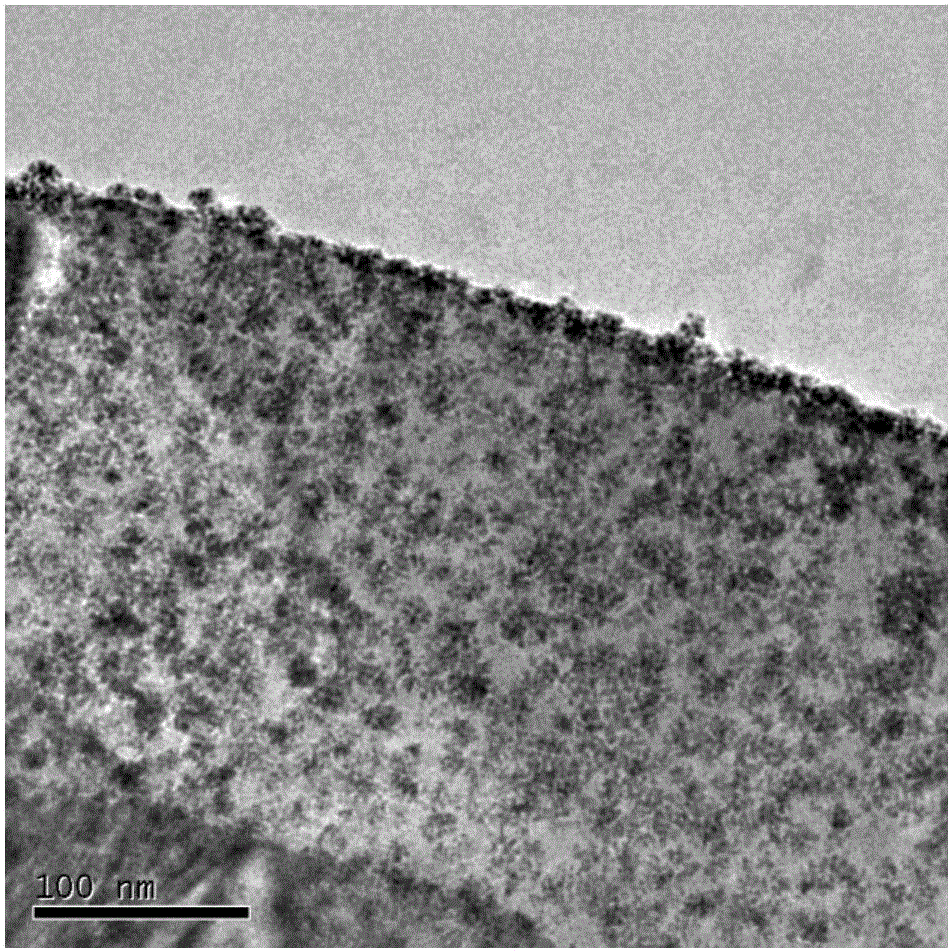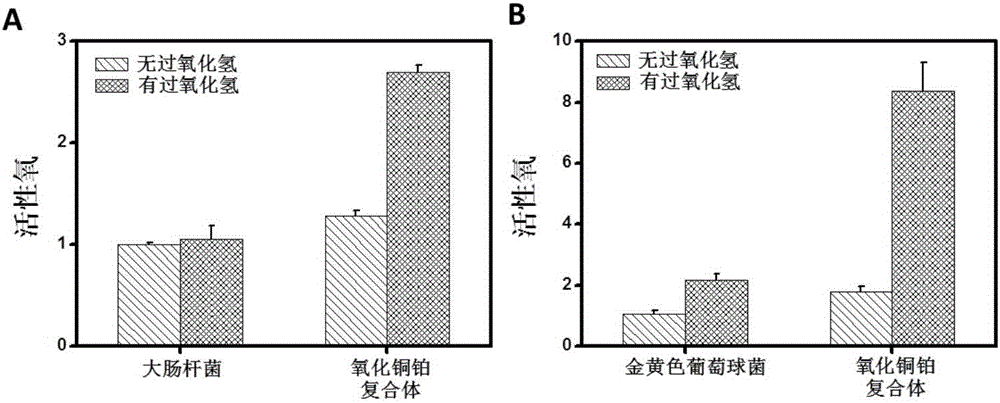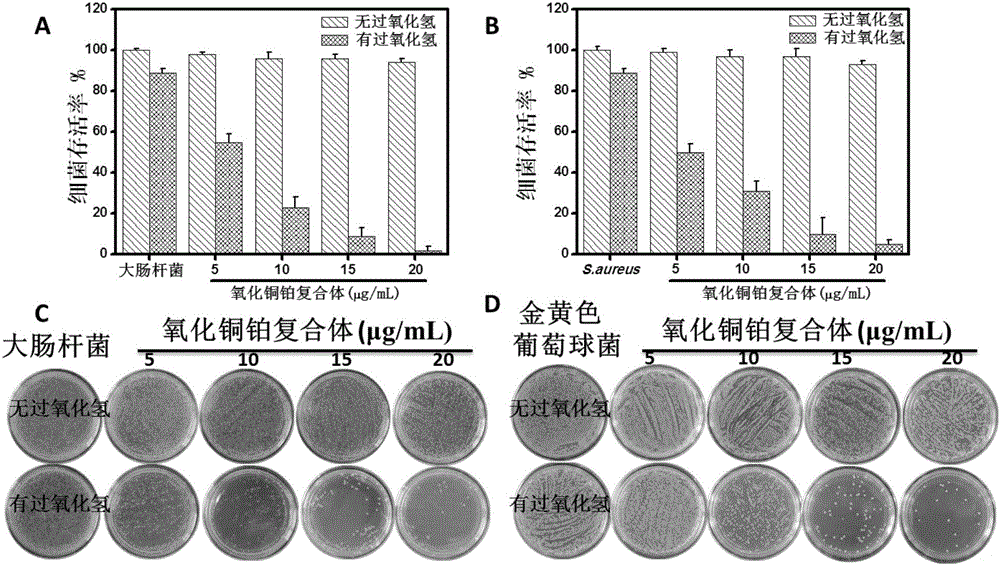Application of copper oxide-platinum nanocomposite in antibiosis
A technology of platinum nanometer and copper oxide, which is applied in the direction of antibacterial drugs, active ingredients of peroxides, and resistance to media-borne diseases. Effect
- Summary
- Abstract
- Description
- Claims
- Application Information
AI Technical Summary
Problems solved by technology
Method used
Image
Examples
preparation example Construction
[0029] The preparation method of the bacterial suspension in the following examples is as follows: using an inoculation loop to inoculate two kinds of bacteria in LB medium by aseptic operation, and cultivate overnight at 37° C. and 150 rpm.
[0030] The cultivation method of the bacterial biofilm in the following examples is as follows: (1) Add 900 μL of TSB medium into a 24-well plate through aseptic operation. (2) Add 100 μL of bacteria in logarithmic growth phase to each well. (3) Incubate the 24-well plate in an incubator for 48 hours at 37°C, and replace with fresh TSB medium every 12 hours.
[0031] The experimental methods used in the following examples are conventional methods unless otherwise specified.
[0032] The materials and reagents used in the following examples can be obtained from commercial sources unless otherwise specified.
Embodiment 1
[0033] The preparation of embodiment 1 copper oxide-platinum nanocomposite
[0034] 1. Preparation of copper oxide nanosheets
[0035] Dissolve 0.5g copper chloride dihydrate and 0.5g CTAB in 15mL water, and add 1mL sodium hydroxide solution (0.3g / mL); transfer the above reaction solution into a 20mL reactor, and react at 120°C for 6h. After the reaction is finished, the copper oxide nanosheets are obtained by centrifugation and washing.
[0036] 2. Preparation of copper oxide-platinum nanocomposites
[0037] First, 660 μL of copper oxide nanosheets (170 mg / L) was added into 2.34 mL of ultrapure water, and ultrasonicated for 10 min to make them uniformly dispersed. Then, 23.5 μL of H 2 PtCl 6 ·6H 2 O in water (19.3 mM). Finally, under an ice bath, stir rapidly and add 1 mL of NaBH dropwise 4 Aqueous solution (4.8mM), continue to stir for 2h after the dropwise addition. After the reaction is finished, the copper oxide-platinum nanocomposite is obtained through centrifug...
Embodiment 2
[0038] Example 2 Application of Copper Oxide-Platinum Nanocomposite in Antibacterial
[0039] 1. Measurement of reactive oxygen species in bacterial cells by copper oxide-platinum nanocomposites
[0040] Step: (1) collect the bacterium of logarithmic growth phase, wash with the PBS of 0.01M, and adjust its OD600=0.1 (10 8CFU / mL), aliquot 20 μL into a 1.5 mL centrifuge tube. (2) Add copper oxide-platinum nanocomposites to the centrifuge tube at a final concentration of 20 μg / mL, and simultaneously add hydrogen peroxide. The final concentration of hydrogen peroxide for Escherichia coli is (50 μM), and the final concentration of hydrogen peroxide for Staphylococcus aureus is (300 μM). (3) Place the above-mentioned centrifuge tube in an incubator at 37° C. and 150 rpm for 3 hours. (4) Add fluorescent probe DCFH-DA (100 μM) to the above system, incubate at 37° C., 150 rpm for 30 minutes. (5) Use a microplate reader to measure the fluorescence value of excitation at 485nm and em...
PUM
 Login to View More
Login to View More Abstract
Description
Claims
Application Information
 Login to View More
Login to View More - R&D
- Intellectual Property
- Life Sciences
- Materials
- Tech Scout
- Unparalleled Data Quality
- Higher Quality Content
- 60% Fewer Hallucinations
Browse by: Latest US Patents, China's latest patents, Technical Efficacy Thesaurus, Application Domain, Technology Topic, Popular Technical Reports.
© 2025 PatSnap. All rights reserved.Legal|Privacy policy|Modern Slavery Act Transparency Statement|Sitemap|About US| Contact US: help@patsnap.com



